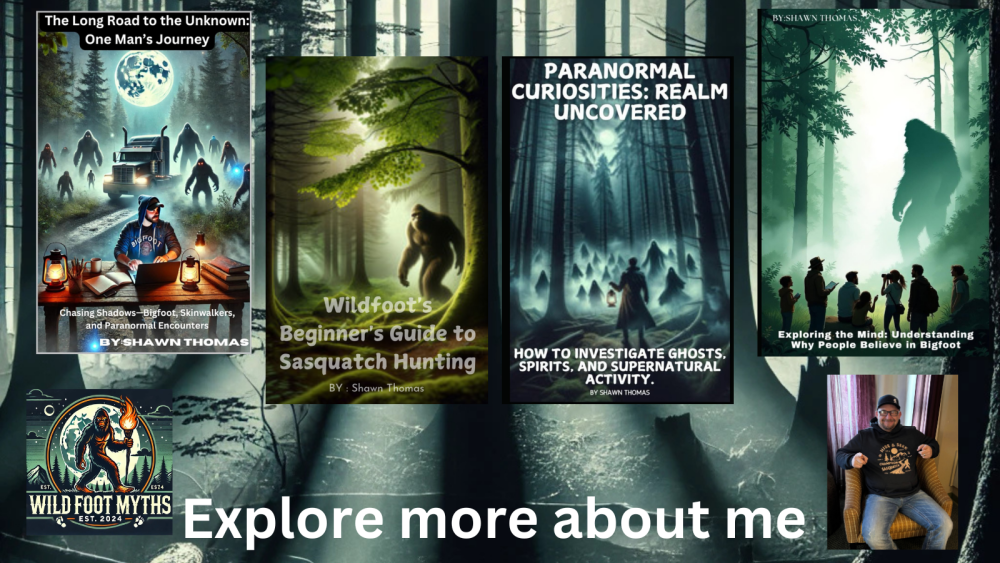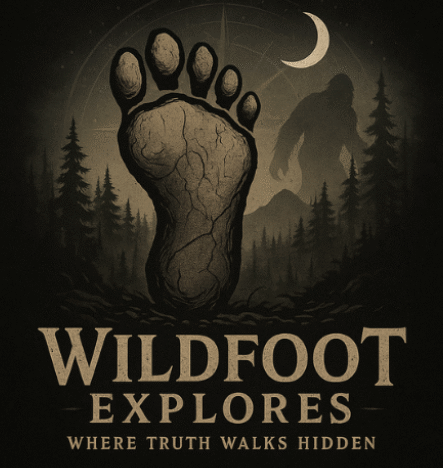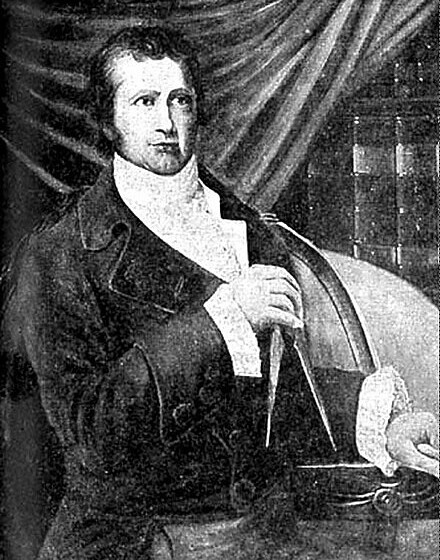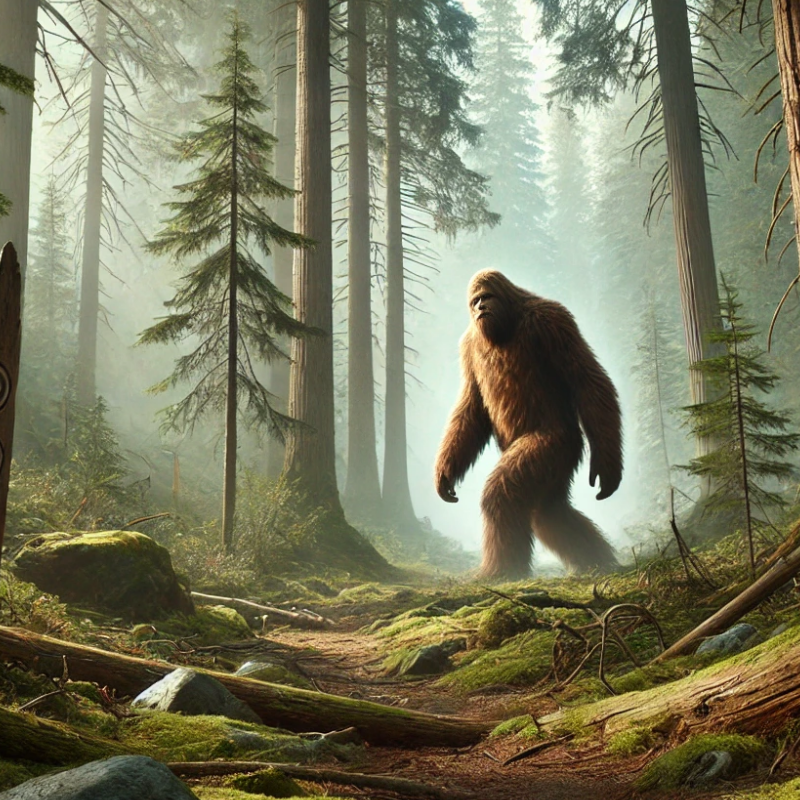
- Early Recorded Encounters and Historical Accounts
- The 1950s: Birth of the Modern Bigfoot Phenomenon
- The Patterson-Gimlin Film: Catalyst for the Bigfoot Craze
- Scientific Perspectives and Future of Bigfoot Research
- HIKMICRO Thermal Camera E01, 96×96 IR Resolution, 20Hz Refresh Rate, Portable Handheld Infrared Thermal Imaging Camera with Laser Pointer, 8H of Battery Life
- Potensic ATOM SE GPS Drone With 4K EIS Camera, Under 249g, 62 Mins Flight, 4KM FPV Transmission, Max Speed 16m/s, Auto Return, Lightweight and Foldable Drone with Brushless Motor
- HOTPEAK Camcorder Video Camera 5K 56MP WIFI YouTube Vlogging Camera 3” 270° Rotatable Touchscreen Podcast Camera Recorder with 64G SD
So, when we’re talking about Bigfoot, we’re not just talking about some modern-day phenomenon but something with roots going way back—think ancient times. Indigenous tribes from North America were onto it long before Bigfoot gained its pop culture fame.
You’ve got stories from tribes like the Salish, Sts’ailes, and Algonquin, all describing these big, hairy, human-like creatures chilling in the forests. They often had different names for them, like Sasquatch, Bukwas, or Wendigo. These beings weren’t just myths to them; they were as real as the forest trees.
For instance, the Sts’ailes people from British Columbia had Sasq’ets, which later inspired the name Sasquatch. They saw this being as a shy, intelligent protector of the woods, a kind of guardian—you don’t want to mess with it unless you’re looking for trouble!
These stories weren’t just campfire tales. They played a part in the culture and lifestyle, passed down through generations by word of mouth. Each story painted these creatures as elusive and, sometimes, as having supernatural powers, sparking both fear and fascination.
Imagine living in those times and hearing about creatures leaving massive footprints or acting as forest guardians. It’s no wonder these tales stuck around, blending fear with curiosity, exactly what any good legend is supposed to do.
– Shawn Thomas
Some links on this site are affiliate links to products I trust, my paranormal books, and gear for Bigfoot and paranormal research. Clicking is free, and if you make a purchase, I may earn a small commission at no extra cost to you.
I also use AI tools to create engaging content and visuals to enhance your experience. Transparency is important to me, so feel free to reach out with any questions.
Thanks for visiting, and happy exploring!
Wildfoot Myths
Paranormal Curiosities Realm
Enjoy the blog!
Early Recorded Encounters and Historical Accounts
The Bigfoot story took an interesting turn when European settlers moved west. They brought their own written records, turning oral legends into documented tales. Suddenly, these stories weren’t just for campfires but were being published in widely-read newspapers.
One of the first big mentions was thanks to explorer David Thompson back in 1811. Picture this—he stumbled across gigantic footprints in the snow near Jasper, Alberta. This wasn’t just any footprint; it was something that couldn’t be explained by ordinary wildlife.
Then you’ve got stories popping up in newspapers throughout the 19th and early 20th centuries. These snippets included all sorts of legendary encounters with mysterious, ape-like beings. Such reports added layers to the growing narrative surrounding these elusive creatures.
The 1924 Ape Canyon Incident really kicked up a stir. Imagine prospectors claiming they were attacked by bipedal creatures in Washington! Whether it was a real event or just the isolation getting to them, it fueled conversations about unknown beings lurking just out of sight.
So what do these early accounts mean for us now? They’re reminders that the fascination with Bigfoot has deep roots. Each tale, whether proven or mythical, keeps the legend alive, challenging folks to question what really roams the wilderness.
The 1950s: Birth of the Modern Bigfoot Phenomenon
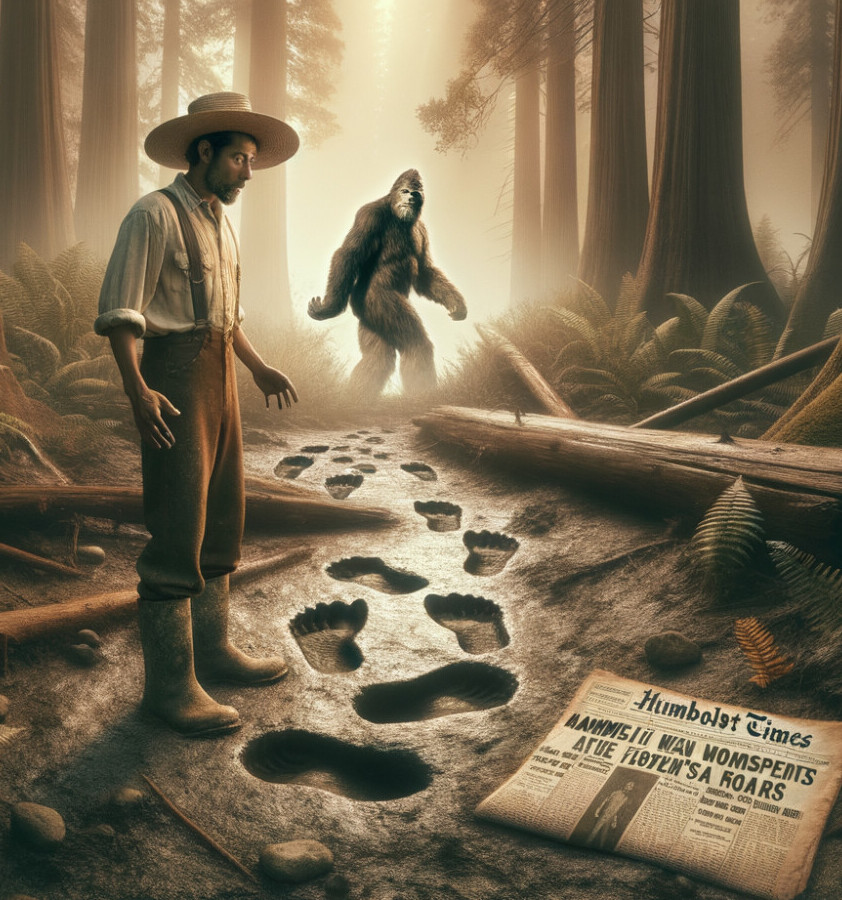
The Bigfoot buzz really exploded during the late 1950s. Everything kicked off when Jerry Crew, a construction worker, stumbled across giant footprints up in Northern California. I’m talking about massive tracks that you’d stop and stare at.
This was big enough news to get into the Humboldt Times newspaper, and it was there that the term “Bigfoot” was born. Suddenly, everyone wanted to know about these mysterious creatures making tracks.
People were hooked. Was it just a big bear, or were we dealing with something new entirely? That simple newspaper article had set the stage for a nationwide fascination, sparking tons of speculation and interest.
Of course, the scientists of the time were skeptical, as you’d expect. But there was a level of curiosity that had even experts on edge, itching to discover if something had been missed in nature’s books.
This era marked the shift from ancient legend to modern-day intrigue, setting the foundation for Bigfoot’s indelible mark on our culture. It was only a matter of time before the legend would get another major boost with one very famous film clip.
The Patterson-Gimlin Film: Catalyst for the Bigfoot Craze
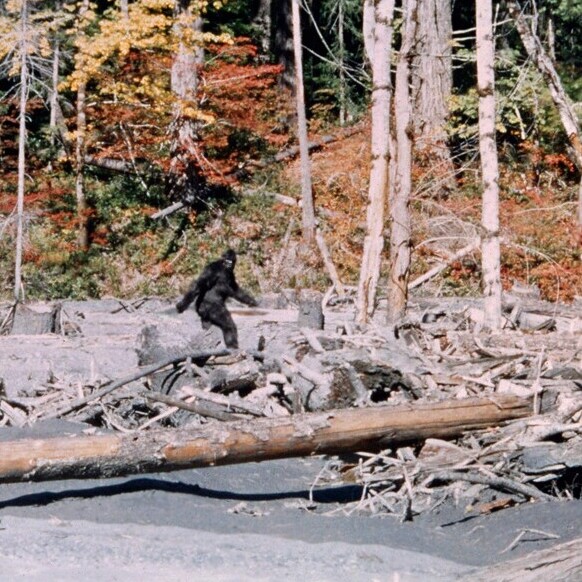
The year 1967 marked a seismic shift in how Bigfoot was perceived, thanks to one iconic piece of footage. I’m talking about the Patterson-Gimlin film, shot at Bluff Creek, California. This wasn’t just any ordinary sighting; it was a whole new chapter in the legend.
Roger Patterson and Bob Gimlin, the men behind the camera, claimed to have captured a real Sasquatch strolling through the forest. The film shows what looks like a large, female Bigfoot striding away, casually glancing back at the camera as if to say, ‘Yeah, try to figure me out.’
This film turned Bigfoot into a household name, sparking debates that would last decades. Was it an elaborate hoax, or did Patterson and Gimlin really document something extraordinary? It’s a question people are still asking today.
While some folks see it as compelling evidence, skeptics argue it’s all smoke and mirrors, maybe a guy in a gorilla suit. Despite the divisive opinions, its cultural impact was huge, fueling curiosity and leading to more sightings and reports.
Whether the footage is genuine or not, it did its job—it captured imaginations and stirred up excitement. People had something tangible, albeit controversial, to latch onto, taking the Bigfoot story to a global audience.
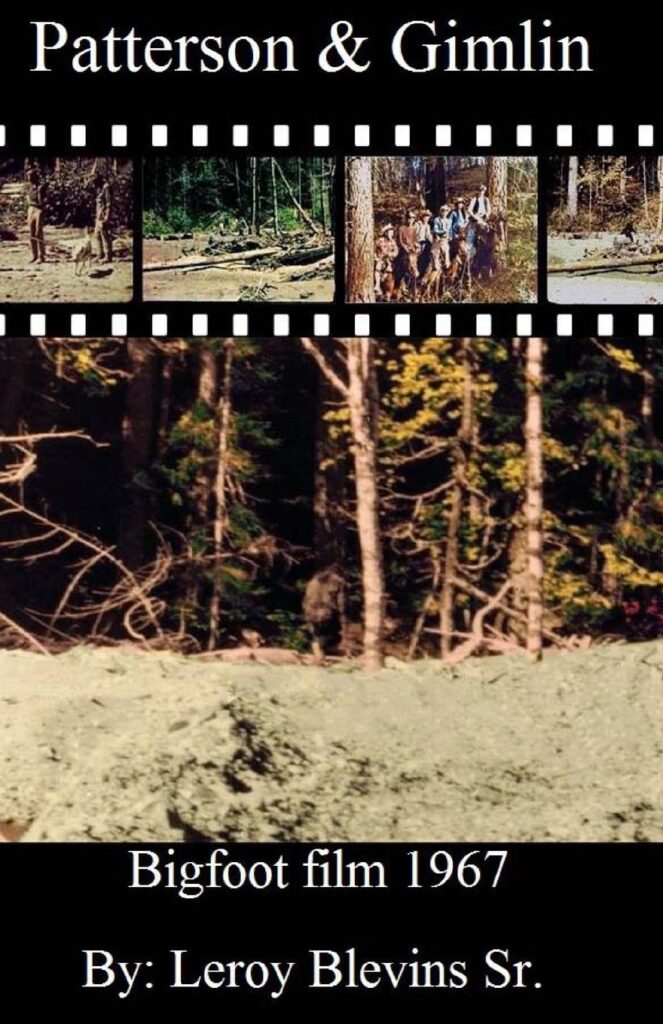
Looking to uncover the truth behind one of the most debated pieces of Bigfoot evidence in history? The Patterson-Gimlin Film is a must-read for anyone intrigued by cryptid mysteries and the enduring legacy of this iconic footage. Dive into the fascinating details surrounding the famous 1967 encounter, the controversies, and the lasting impact it has on Sasquatch research today. Whether you’re a believer, skeptic, or curious explorer, this book will give you plenty to think about
Bigfoot’s Influence in Pop Culture and Media
Once the Patterson-Gimlin film hit the scene, Bigfoot became more than just a mysterious forest dweller. It turned into a bonafide pop culture superstar, cropping up in everything from documentaries to cult classic films.
Movies like ‘Harry and the Hendersons’ brought a lighter, family-friendly twist to the Bigfoot narrative, showcasing the creature as a misunderstood gentle giant. Meanwhile, documentaries and TV shows like ‘Finding Bigfoot’ pushed the boundaries of what’s out there, fanning the flames of curiosity and debate.
This spotlight brought about the birth of numerous Bigfoot organizations, as enthusiasts and researchers formed groups dedicated to discovering the truth. They organized expeditions, shared sightings, and kept the legend alive, each investigation adding fresh layers to the story.
The media played a massive role here, casting Bigfoot in various lights—sometimes as a friendly figure, other times as a mysterious, elusive being. It wasn’t just TV and movies, either; Bigfoot made regular appearances in books, news stories, and even commercials.
This cultural phenomenon created a feedback loop where media portrayal influenced public perception, leading to more reported sightings and stories. It’s like a game of telephone, only each retelling adds to the enigma of Bigfoot rather than distilling it down.
Bigfoot’s presence in popular media ensured its mystique didn’t fade, keeping new generations intrigued and engaged. Every show, article, or film is like a new chapter in Bigfoot lore, continuing to weave the story of this captivating modern-day myth.
Scientific Perspectives and Future of Bigfoot Research
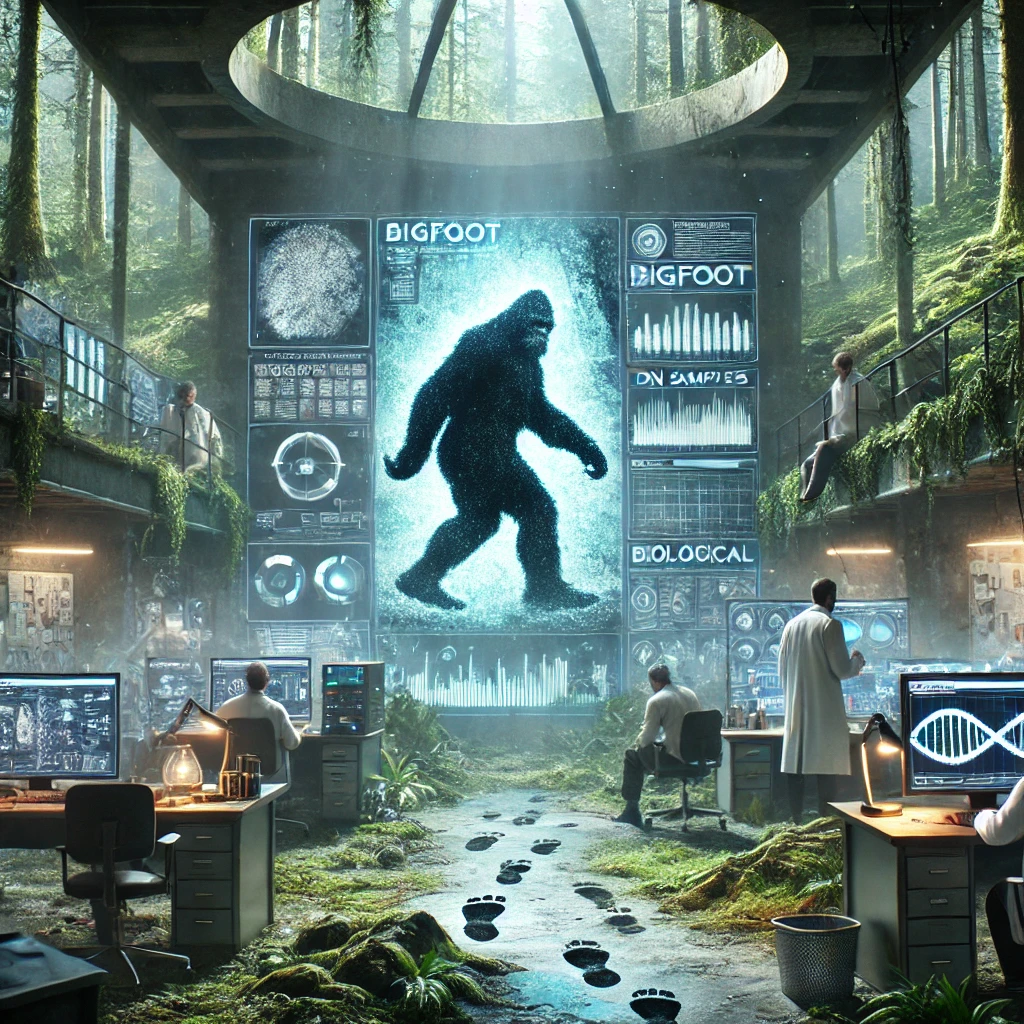
Bigfoot’s place in scientific circles is as complicated as it is fascinating. Some researchers see the reports as misidentifications—creatures we already know, mistaken for something more mysterious. Others hold onto the hope that perhaps, just maybe, there’s an undiscovered species walking among us.
Today, the hunt for Bigfoot has gotten a technological upgrade. Modern tools like DNA analysis have stepped into the spotlight, analyzing hair samples or biological traces supposedly left behind. Although results are mostly inconclusive, every test is another step toward uncovering the truth.
Thermal imaging and motion-activated cameras have transformed how expeditions search for evidence. They’re prowling forests with cutting-edge tech, hoping to capture any signs of this elusive giant. With drone technology, researchers can now go places they couldn’t before, expanding the reach and scope of their quests.

HIKMICRO Thermal Camera E01, 96×96 IR Resolution, 20Hz Refresh Rate, Portable Handheld Infrared Thermal Imaging Camera with Laser Pointer, 8H of Battery Life
- About this Item
- Enhanced Resolution: SuperIR tech upscales 96×96 IR to 240×240 for clearer thermal images.
- Problem Finder: Detects insulation gaps, leaks, HVAC, and mechanical issues.
- Smart Features: Hot/cold spots, multiple palettes, and 30K+ image storage.
- Compact & Durable: 8-hour battery, laser pointer, and lightweight design.
- Warranty: 2 years (battery), 3 years (device), 10 years (sensor).
- 4o

Potensic ATOM SE GPS Drone With 4K EIS Camera, Under 249g, 62 Mins Flight, 4KM FPV Transmission, Max Speed 16m/s, Auto Return, Lightweight and Foldable Drone with Brushless Motor
- About this Item
- Lightweight & Wind-Resistant: Under 249g, no FAA registration needed. Compact and stable with level-5 wind resistance.
- 4K Camera with Sony Sensor: Captures 12MP photos and 4K video. ShakeVanish tech ensures smooth, stable shots.
- Easy Control Modes: Beginner-friendly with 3 flight modes (Video, Normal, Sport) and speeds up to 16m/s.
- 62-Min Flight Time: Comes with 2 batteries, offering a total of 62 minutes of flying fun.
- Long Range Transmission: PixSync 2.0 provides up to 4km range and low-latency video..

HOTPEAK Camcorder Video Camera 5K 56MP WIFI YouTube Vlogging Camera 3” 270° Rotatable Touchscreen Podcast Camera Recorder with 64G SD
- About this Item
- 5K UHD Camera: Captures 56MP images and 5K videos at 30 FPS with 16x zoom and a 270° rotating 3” touch screen.
- Wi-Fi & Night Vision: Connect via the “Lercenker” app for remote control and file sharing. IR night vision captures clear shots in the dark.
- Webcam & Stabilization: Functions as a webcam for streaming. Comes with a handheld stabilizer to reduce shake.
- Microphone & Remote Control: External mic for clear audio and 2.4G remote with 20
Despite the skepticism, these efforts aren’t in vain. Each expedition adds to the data pool, offering more insights into the wilderness and the potential creatures living there. Even when Bigfoot remains elusive, the indirect benefits to wildlife research are profound.
So, what’s next for Bigfoot and its enthusiasts? The mystery keeps evolving, inviting curious minds to seek answers. Maybe one day there’ll be a breakthrough capturing the definitive proof needed to settle it once and for all. Until then, Bigfoot’s allure lies in the chase—it’s an ever-inviting puzzle that challenges our imagination, making us ponder what still lurks in the world’s wildest corners.
